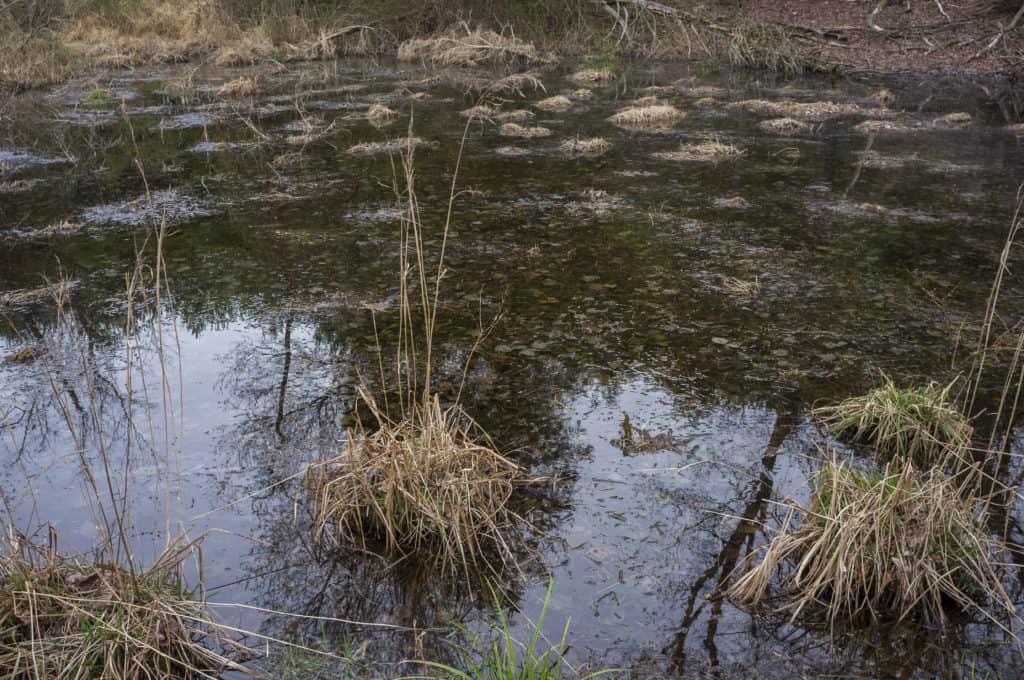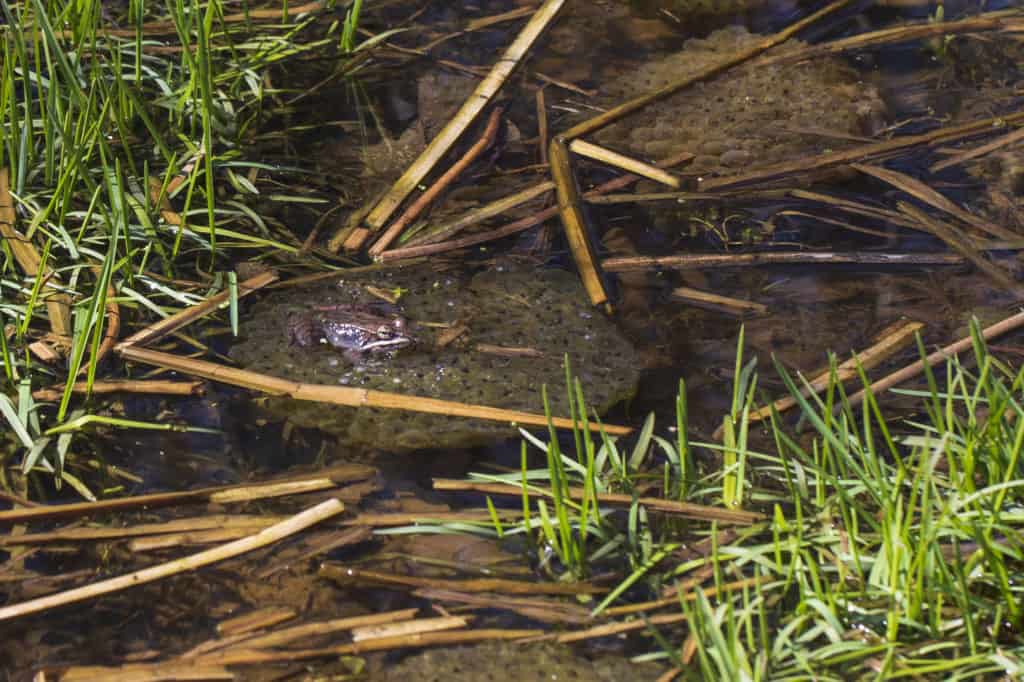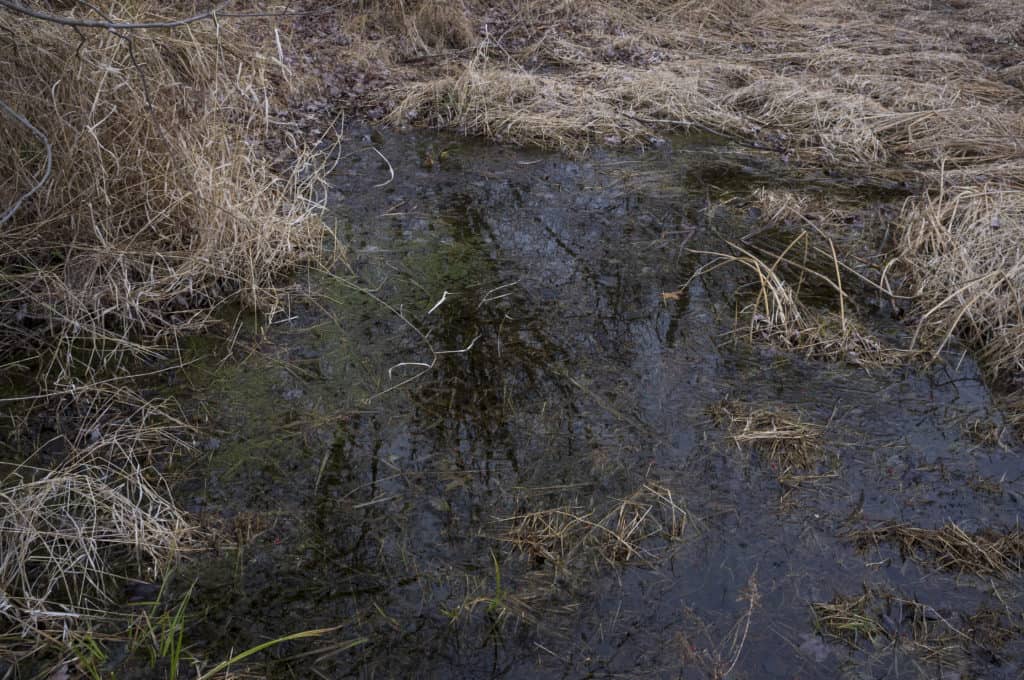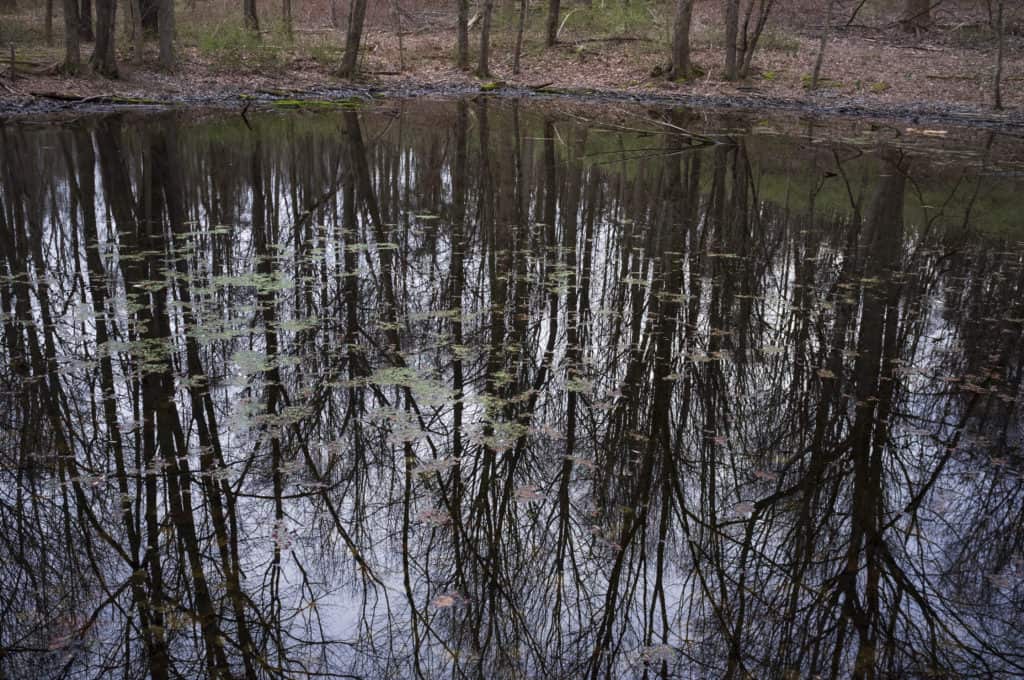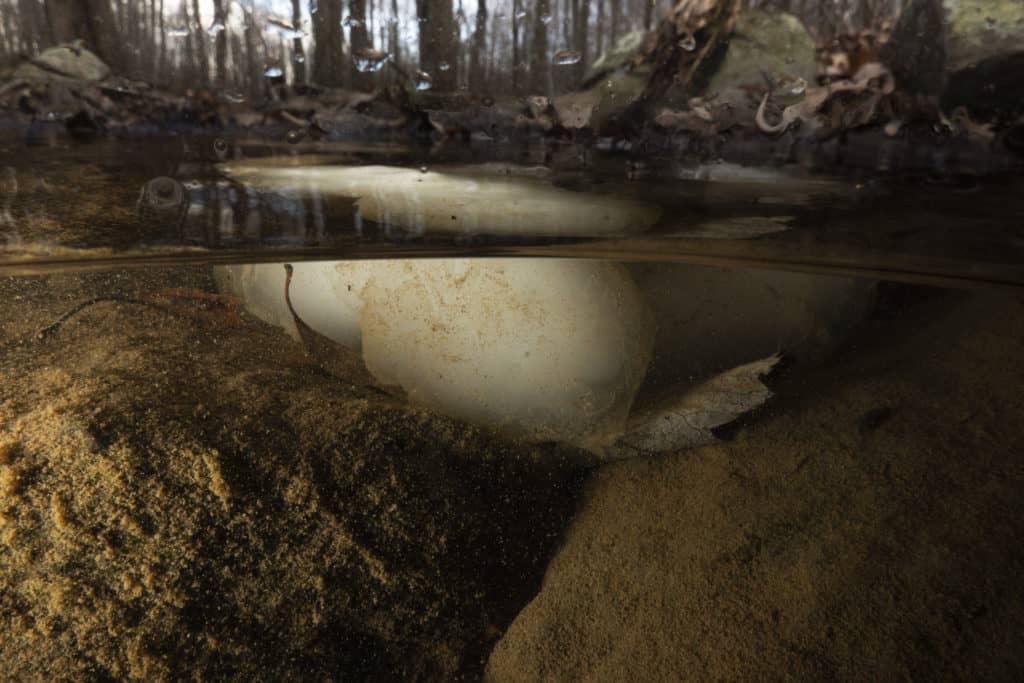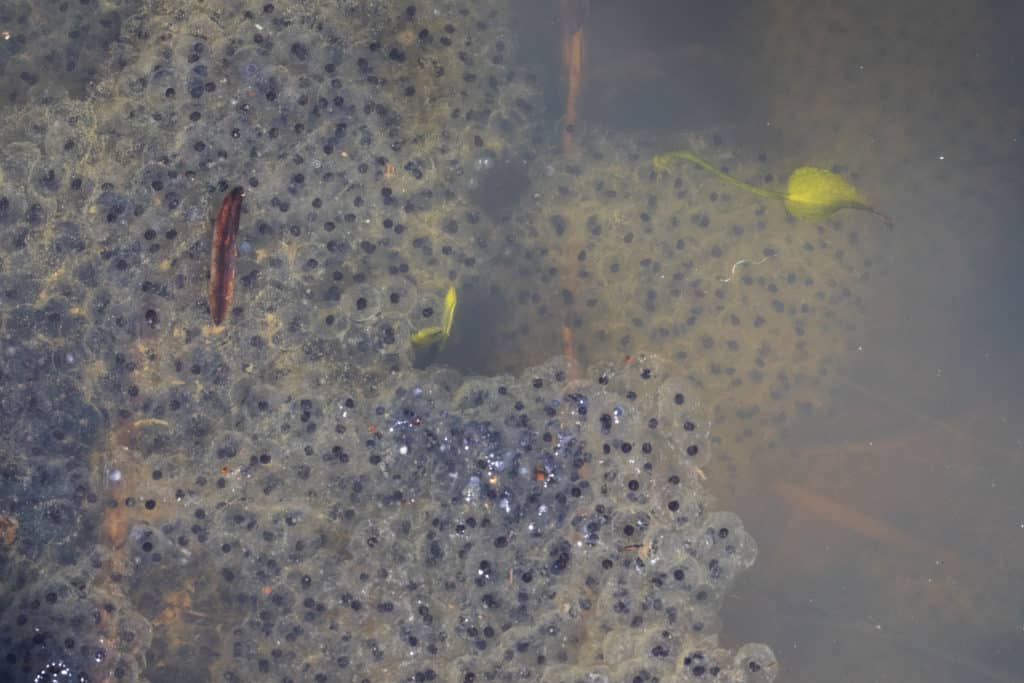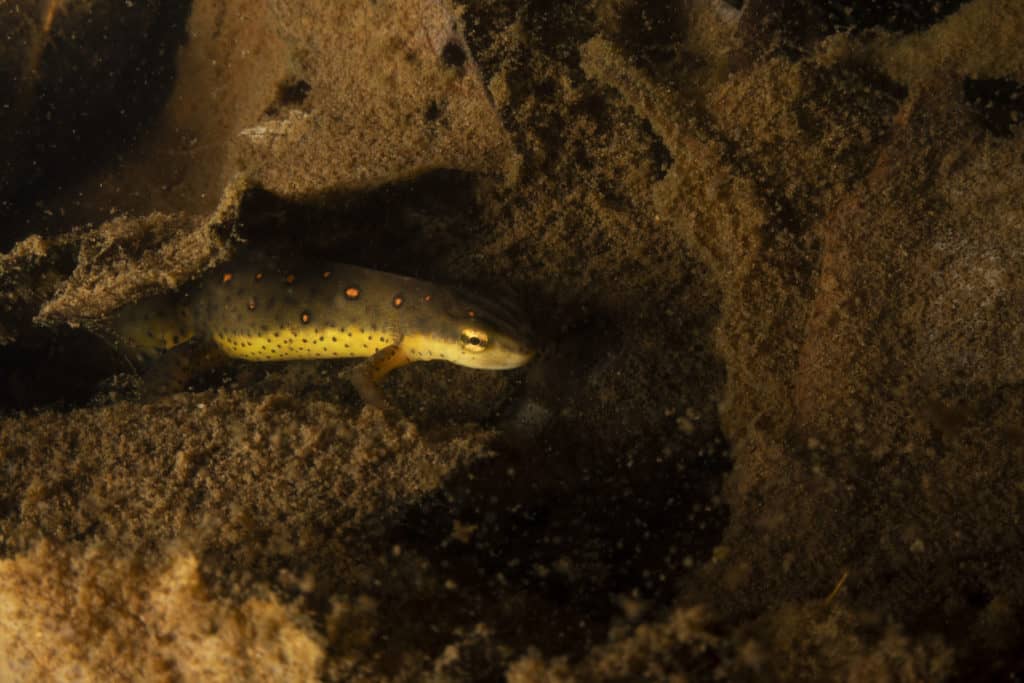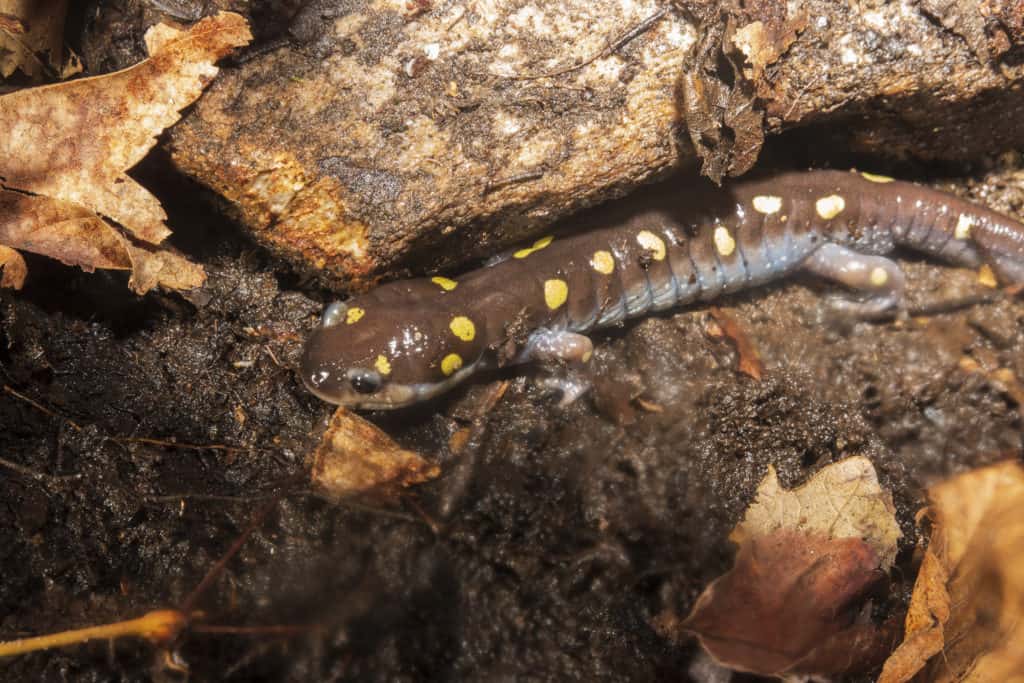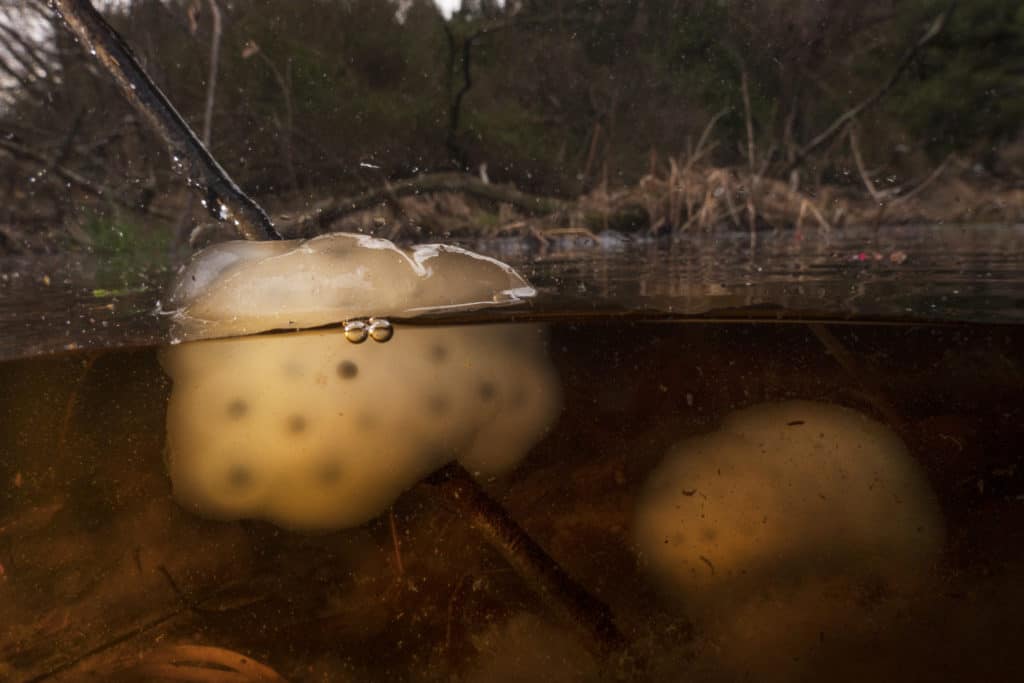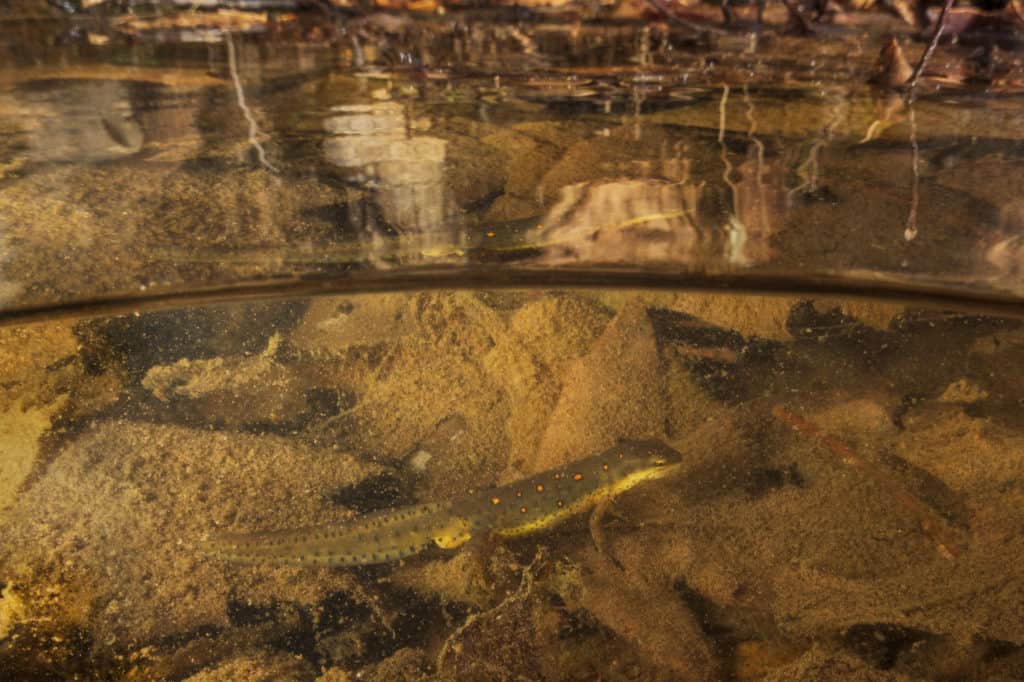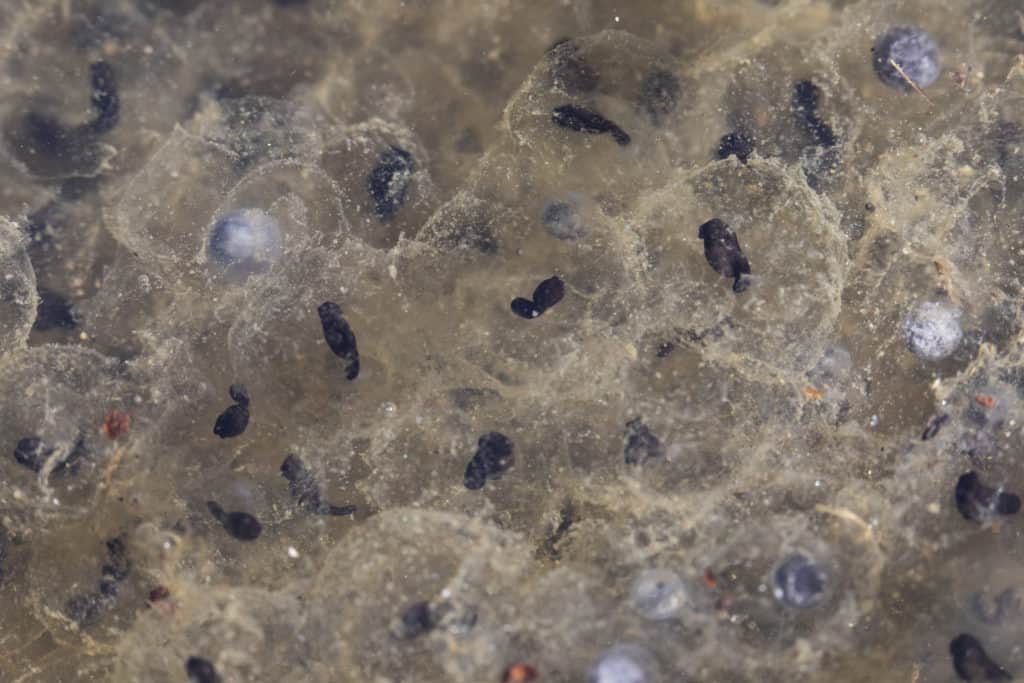Life in a Vernal Pond
Shallow seasonal wetlands are a chance to see spring’s changes in action
The delicate changes that signal spring are ephemeral and joyous—a welcome contrast from this time of overarching stress and anxiety. The daffodils in bloom are a precursor to all wildflowers to come. The emergence of tree buds along with the arrival of bird song illustrate the sense of renewal that comes with the season. The most exciting changes are found in the underwater realm of vernal pools.
Vernal pools are seasonal shallow wetlands that are filled by rain and/or snow melt. Some will look like loose ponds while others have clear boundaries. Often overlooked, but simply incredible, these ponds house an abundance of life: frogs, toads, mole salamanders, newts, and even freshwater fairy shrimp. Best of all you do not have to travel to find them and there are more of them than you may realize.
Early spring rains trigger amphibian breeding events and they will travel to the pools to breed and deposit gelatinous egg masses below the surface of the water. I find these eggs to be otherworldly, with their planetary forms. The eggs of some species, like spotted salamanders, may appear cloudy or clear depending on the chemical makeup. Other species, like wood frogs, will deposit a large mass of eggs where you can easily see the embryos growing inside. Visiting the same vernal pool repeatedly is an excellent way to view metamorphosis in action. To see frog eggs go from larvae to tadpole to froglet (young frog) is remarkable, and it must be completed before the vernal pool dries up.
So how do you find a vernal pool? Familiarize yourself with the calls of local frogs. Probably the most familiar is the spring peeper. The chorus of hundreds of singing males is often heard at night. Take a walk in the forest to find a small pond or large puddle-like depression and take a closer look. You may see an eastern newt swimming or an egg mass.
Just like the petals of a spring wildflower are delicate, so are vernal pools. While it may be tempting, I would not suggest handling any amphibian with your bare hands, as it could be detrimental to the animal. Certain species like lungless salamanders breathe through their skin. The oils in our hands can clog the pores of their skin.
The good news is that most amphibians are actually pretty docile so long as you give them some space. If you want to learn more and observe proper handling, I suggest getting involved with a local herpetology group.
Disinfect your boots or shoes with a bleach mix if you travel from vernal pool to vernal pool. The last thing you want to do is unknowingly spread an amphibian-killing disease, a major source of mortality for certain species.
Perhaps the best thing about vernal pools is that they are fun. Fun to locate, observe and study for children and adults alike. What superficially appears to be simple often showcases the web of life’s complexity in miniature form.
These living laboratories are out there waiting to be discovered by you. But do not wait too long because, like spring blooms, they will only be here for a brief period.

